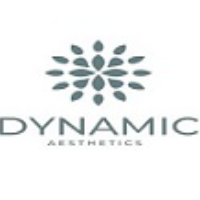Does Microdermabrasion Treat Hyperpigmentation?
Hyperpigmentation is a common skin concern that can affect individuals of all skin types and tones. It occurs when excess melanin is produced in certain areas, leading to dark patches or uneven skin tone.Microdermabrasion in Dubai has emerged as a frequently discussed option among those exploring non-invasive skin resurfacing treatments. Known for its ability to refresh dull skin, smooth rough texture, and stimulate collagen production, microdermabrasion is also often considered for treating pigmentation issues.
What Causes Hyperpigmentation?
Hyperpigmentation arises when an overproduction of melanin—the pigment responsible for skin color—concentrates in one area. Several factors can contribute to this condition, including Prolonged sun exposure that triggers melanin production as a protective response Post-inflammatory changes following acne, eczema, or injury Hormonal shifts such as melasma, often triggered by pregnancy or contraceptive use Aging, which may bring about liver spots or age spots.
Different Types of Hyperpigmentation
It’s important to identify the type of hyperpigmentation present in order to choose the most effective treatment:
Epidermal: The pigment lies in the upper layers of the skin, making it more responsive to topical and surface-level treatments.
Dermal: The pigment resides deeper within the skin and may require more advanced procedures to treat.
Mixed: A combination of both epidermal and dermal, making treatment more complex but still manageable.

Benefits of Skin Resurfacing
The benefits of microdermabrasion go beyond simple exfoliation. As the skin rejuvenates, several positive changes can occur:
Improved skin tone and brightness
Fading of superficial pigmentation spots
Smoother skin texture
Reduced appearance of fine lines
Enhanced blood circulation and skin health
These advantages contribute to a youthful appearance and help in managing skin imperfections, including certain types of hyperpigmentation.
Microdermabrasion’s Role in Treating Hyperpigmentation
Sun-induced pigmentation
Acne marks and mild post-inflammatory hyperpigmentation
Uneven skin tone caused by environmental damage
While deeper pigmentation issues may not completely vanish through microdermabrasion alone, the treatment serves as a valuable part of a broader skin correction routine.
Enhancing Skin Cell Turnover
Hyperpigmentation often results from slowed or irregular skin cell turnover. Microdermabrasion helps by accelerating this process, allowing pigmented cells to slough off more quickly and paving the way for newer, healthier skin. Over multiple sessions, this ongoing renewal contributes to a more uniform complexion.
Complementing Topical Treatments
Microdermabrasion does not act in isolation. It amplifies the effectiveness of topical treatments like brightening serums and vitamin C-based products. By creating a smoother skin surface and unclogging pores, it enhances absorption, making accompanying products more efficient in targeting pigment at a cellular level.
Conclusion
Microdermabrasion offers a practical and effective solution for addressing superficial forms of hyperpigmentation. By gently exfoliating the skin and encouraging regeneration, it helps fade dark patches and restore a more balanced complexion.
